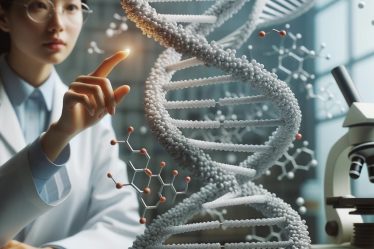
The periodic table stands as one of the most iconic tools in the realm of chemistry. It’s not just a chart but a comprehensive map showcasing the universe’s building blocks. Every element on this table plays a unique role, and understanding the periodic table means unlocking the secrets of how our world operates at a molecular level.
Discover your ideal chemistry tutor at meet’n’learn and skyrocket your understanding to new heights!
But what makes the periodic table so special? Why has it been the subject of countless scientific studies, revisions, and discussions?
- Organized Knowledge: The periodic table arranges all known chemical elements in an ordered and systematic way. This organization is not random; it’s based on properties, atomic numbers, and electron configurations.
- Predictive Power: With the periodic table, chemists can predict how certain elements will behave in chemical reactions. This is crucial for experiments and for creating new compounds.
- Historical Record: The table serves as a historical record, showcasing elements discovered over centuries. It’s a testament to human curiosity and our quest to understand the universe.
How to differentiate between Ionic and Covalent Bond?
As we journey through this guide, we’ll explore the intricacies of the periodic table, from its layout to the stories behind each element. Whether you’re a student, a teacher, or just someone curious about the world, this guide aims to shed light on the wonders of the periodic table.
Understanding the Layout of the Periodic Table
The periodic table is more than just a collection of elements; it’s a roadmap to understanding the behavior and properties of matter. Let’s break down its layout:
Groups, Periods, and Blocks
- Groups (Columns): Elements in the same group share similar chemical properties. For instance, Group 1 elements, known as alkali metals, are highly reactive.
- Periods (Rows): As you move across a period from left to right, the atomic number increases. Elements in the same period have the same number of electron shells.
- Blocks: The Periodic Table is divided into blocks (s, p, d, f) based on the atomic orbitals. For example, the s-block includes Groups 1 and 2.
Distinguishing Metals, Non-Metals, and Metalloids
Elements are broadly categorized into three types:
- Metals: Typically shiny, good conductors of heat and electricity, and malleable. Examples include iron, copper, and gold.
- Non-Metals: Generally poor conductors with varied appearances. Oxygen and nitrogen are examples.
- Metalloids: These elements exhibit properties of both metals and non-metals. Silicon and boron are classic examples.
Introduction to Redox Reactions.
The Periodic Table: Significance of Element Groupings
The periodic table isn’t just a random arrangement of elements; it’s meticulously organized to showcase the relationships between elements. Here’s how:
- Groups and Periods: Elements are arranged in 18 vertical columns called groups and 7 horizontal rows known as periods. Elements within the same group share similar chemical properties.
- Main Blocks:
- s-block: Groups 1 and 2, including hydrogen and helium. Known for their reactivity, especially the alkali metals in Group 1.
- p-block: Groups 13 to 18. This block contains diverse elements, from metals to non-metals and noble gases.
- d-block: Transition metals. These elements are known for their ability to form various colorful compounds.
- f-block: Lanthanides and actinides. Many of these elements are rare, and some are radioactive.
- Metal, Non-metal, and Metalloids: The table also distinguishes between metals (left side), non-metals (right side), and metalloids (elements that have properties of both metals and non-metals).
Explore Acids, Bases and pH.
Understanding these groupings is crucial for predicting an element’s properties and behavior. In the next chapter, we’ll explore the fascinating stories behind discovering some of these elements.
Key Elements and Their Significance in Chemistry
The Periodic Table is more than just a collection of symbols and numbers; it’s a roadmap to understanding the universe’s building blocks. A few stand out among its vast array of elements due to their unique properties and significant roles in various applications.
Hydrogen (H)
- Atomic Number: 1
- Significance: As the lightest and most abundant element in the universe, hydrogen is a cornerstone in chemical reactions, especially in acid-base interactions. Its potential as a clean energy source is also being explored, making it a focal point in sustainable energy research.
What are Hydroxides?
Helium (He)
- Atomic Number: 2
- Significance: Beyond filling balloons, helium’s low reactivity and cooling properties make it invaluable in medical technologies like MRI machines and scientific research equipment.
How is a Hydrogen Bond Formed?
Carbon (C)
- Atomic Number: 6
- Significance: Carbon’s ability to form stable covalent bonds with other elements, including itself, gives rise to a vast array of organic compounds. It’s the backbone of life on Earth, present in every DNA molecule and organic structure.
How is a Covalent Bond Formed?
Oxygen (O)
- Atomic Number: 8
- Significance: Essential for life, oxygen supports cellular respiration in organisms. Additionally, its role in combustion processes powers industries and vehicles around the globe.
What are Functional Groups in organic chemistry?
Transition Metals and Their Unique Properties
Transition metals, often referred to as the d-block elements, are elements found in the middle of the periodic table, specifically in groups 3 to 12. These metals are known for their unique properties, which set them apart from other elements.Key Characteristics of Transition Metals
- Multiple Oxidation States: Transition metals can exist in several oxidation states, allowing them to participate in a variety of chemical reactions. For instance, iron can exist in both +2 and +3 oxidation states.
- High Melting and Boiling Points: Most transition metals have high melting and boiling points due to the strong metallic bonding resulting from their delocalized electrons.
- Formation of Colored Compounds: These metals are known for forming colored compounds, a result of the d-d electron transitions. Copper(II) sulfate, a blue compound, is a classic example.
- Magnetic Properties: Some transition metals, like iron, exhibit magnetic properties due to the unpaired electrons in their d orbitals.
Real-world Applications of Transition Metals
- Catalysts: Transition metals like platinum and palladium are used as catalysts in various industrial processes, including the conversion of harmful car exhaust gases into less harmful substances.
- Electronics: Elements like gold and silver are used in electronics due to their excellent conductivity.
- Construction: Metals such as iron, in the form of steel, play a pivotal role in construction and infrastructure.
Ethanol and Alcohols in Chemistry explained.
Rare Earth Elements and Their Applications
The term “rare earth elements” (REEs) refers to a set of seventeen elements crucial to modern technologies. Despite their name, they’re common. These elements, part of the lanthanides and actinides series, hold unique positions in the periodic table.
The lanthanides are metals with significant magnetic properties, making them vital for electronics. Actinides, known for their radioactivity, have distinct chemical behaviors due to their larger atomic sizes.
REEs are indispensable in various sectors:
- Electronics: Essential for high-performance magnets and batteries.
- Energy: Key components in wind turbines and hybrid vehicles.
- Medical: Used in advanced imaging devices and treatments.
- Defense: Incorporated in equipment like jet engines and missile systems.
How to Learn the Periodic Table
Mastering the periodic table might seem daunting, but with the right approach, you can conquer it. Here’s a strategy to help you navigate this chemical roadmap:
Start Small: Don’t overwhelm yourself. Begin with the first 20 elements. Once you’re comfortable, expand your knowledge to the next set.
Group Study: Elements in the same group share similar properties. Familiarize yourself with one group at a time. For instance, understand the alkali metals before moving to the alkaline earth metals.
Use Mnemonics: Create catchy phrases or songs to remember element sequences. For example, “H He Li Be” can turn into “Happy Helium Likes Beans.”
Visualize with Colors: Color-code elements based on their properties, such as metals, non-metals, or metalloids. This visual aid can make patterns more apparent.
Remember, consistent practice and repetition are your best allies. With dedication, the periodic table will soon feel like familiar territory!
How to calculate Molar Mass and Mass Fraction?
Interactive Tools for Learning the Periodic Table
The digital age offers many resources to make learning the periodic table engaging and effective. Let’s explore some of the top tools that can elevate your understanding:
1. Periodic Table Apps: Numerous mobile apps, such as Periodic Table 2023 or Chemistry in Your Pocket, offer interactive features. These apps allow you to tap on an element to get detailed information, view atomic structures, and even take quizzes to test your knowledge.
2. Online Simulations: Websites like PhET Interactive Simulations provide free interactive math and science simulations. Their periodic table module lets you explore element properties, trends, and electron configurations.
3. Augmented Reality (AR) Tools: AR brings the periodic table to life. By scanning a printed periodic table with an AR app, you can see 3D models of atoms, watch chemical reactions, and dive deep into element properties.
4. Educational Websites: Platforms like Khan Academy and ChemCollective offer courses, videos, and interactive exercises on the periodic table and other chemistry topics.
How to calculate the Concentration of a Solution?
Maximizing Chemistry Learning with the Help of Tutors
Chemistry, with its intricate concepts and the vast periodic table, can sometimes feel overwhelming. While self-study methods and digital tools are invaluable, the guidance of a knowledgeable tutor can truly elevate your understanding.
Personalized Learning: Every student’s learning curve is unique. Tutors tailor their teaching methods to suit your strengths and address your weaknesses. Whether you’re grappling with atomic structures or chemical reactions, a tutor can break down complex topics into digestible chunks.
Immediate Feedback: Mistakes are a part of the learning process. With a tutor by your side, you receive instant feedback. This not only corrects misconceptions but also reinforces correct understanding, ensuring you’re on the right track.
Enhanced Engagement: Tutors make learning interactive. Discussions, quizzes, and practical demonstrations ensure you’re not just passively absorbing information but actively engaging with it.
Looking for a chemistry tutor? Enter “chemistry tutor Glasgow” or “chemistry teacher Sheffield” on your preferred tutoring platform, such as meet’n’learn to find a teacher who can meet your specific needs.
If you thrive in group learning environments, search “chemistry classes London” or “chemistry lessons Manchester” online to discover local schools offering chemistry lessons.
While tools and resources provide knowledge, tutors offer direction, clarity, and a personalized touch to your chemistry learning journey. Investing in a tutor could be the key to unlocking your full potential in the subject.
Final Thoughts on the Periodic Table
The periodic table isn’t just a chart; it’s a testament to the wonders of scientific discovery and the intricate nature of our universe. From the tiniest atom to the vastness of space, elements from the periodic table play a foundational role in shaping our world.
As you delve deeper into chemistry, the periodic table will become an indispensable tool. It offers a structured way to understand the behavior of elements, predict their reactions, and appreciate their significance in various applications.
Whether you’re a student, a teacher, or simply someone fascinated by science, the periodic table stands as a beacon of knowledge.
Discover your ideal chemistry tutor at meet’n’learn and skyrocket your understanding to new heights!
Frequently Asked Questions about the Periodic Table
1. Why is the periodic table shaped the way it is?
The periodic table layout reflects how electrons arrange themselves around atomic nuclei. Elements in the same column (or group) have similar electron configurations, which gives them similar chemical properties.
2. What determines an element’s position on the periodic table?
Each element’s position is determined by its atomic number, representing the number of protons in its nucleus. As you move from left to right and top to bottom, the atomic number increases.
3. Why are some elements called “transition metals”?
Transition metals are elements found in the middle of the periodic table. They’re called “transition” because their properties are intermediate between those of metals and nonmetals.
4. Are all the elements on the periodic table naturally occurring?
No, many elements, especially those with higher atomic numbers, are synthetic. Scientists create them in laboratories, and they often exist for only brief moments before decaying.
5. What’s the difference between a group and a period on the periodic table?
A group (or family) is a vertical column on the periodic table, while a period is a horizontal row. Elements in the same group share similar chemical properties due to their electron configurations.
Struggling with biology topics? Explore our extensive collection of biology educational blog posts designed to simplify complex concepts for you. Whether it’s photosynthesis, the intricacies of green algae, understanding bacteria and viruses, or delving into the fascinating world of genetics and cells, our resources have got you covered. Expand your knowledge and enhance your learning journey with us today.


